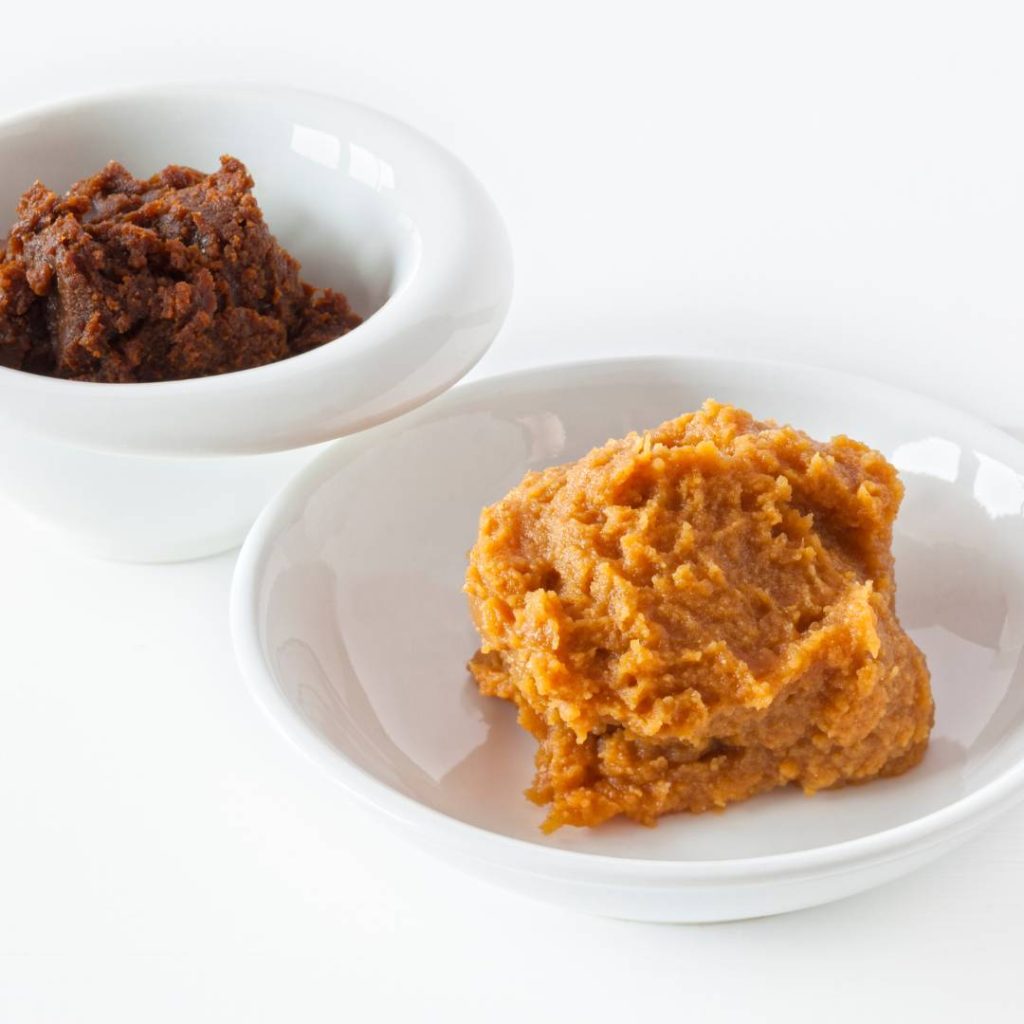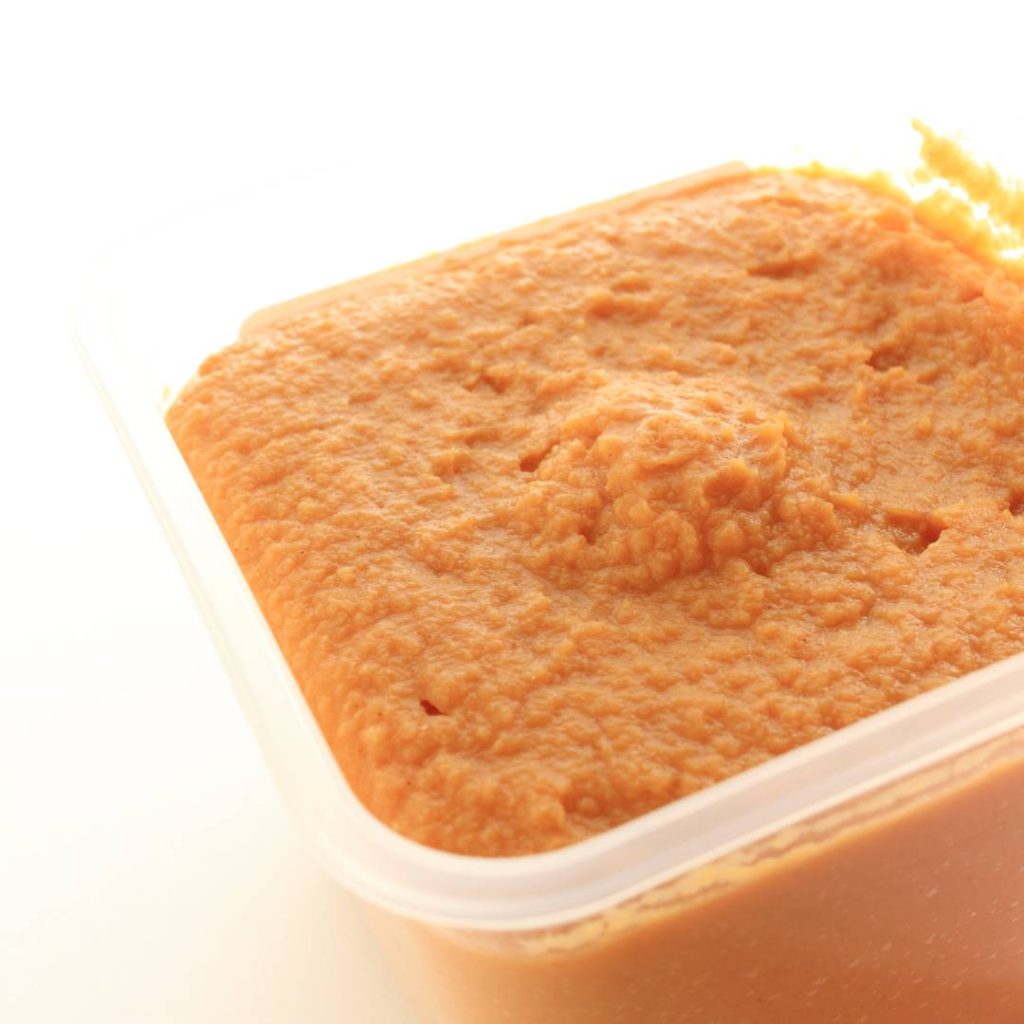Are you wondering does miso paste go bad?
Well, the answer is, it depends.
Miso paste, a traditional Japanese condiment made from fermented soybeans, can indeed go bad over time.
However, with proper storage techniques, you can extend its shelf life and avoid wastage.
In this article, we will explore the factors that affect the shelf life of miso paste, such as storage conditions and expiration dates.
You will learn how to identify signs of spoiled miso paste, ensuring that you only consume it when it is safe to do so.
Additionally, we will share some creative ways to use expired miso paste, so you don’t have to throw it away.
So, let’s dive in and discover everything you need to know about the shelf life of miso paste!

Understanding Miso Paste Shelf Life
So, how long does miso paste actually last in your pantry?
Well, let me tell you, it’s all about understanding its shelf life.
Miso paste is a fermented soybean paste that is rich in flavor and used in various dishes.
When stored properly, it can last for a long time.
Typically, an unopened container of miso paste can last for about one year in your pantry. However, once you open it, the clock starts ticking.
The general rule is that opened miso paste can last for about six months in the refrigerator.
It’s important to keep it tightly sealed and away from moisture to maintain its quality.
So, make sure to check the expiration date and store your miso paste properly to enjoy its deliciousness for as long as possible.

Proper Storage Techniques for Miso Paste
Properly storing miso paste is crucial in order to maintain its quality and extend its shelf life.
To ensure the longevity of your miso paste, follow these storage techniques.
- First, always store it in an airtight container to prevent moisture and air exposure. This will help to maintain its flavor and prevent any mold growth.
- Secondly, keep miso paste in the refrigerator, as it thrives in cool temperatures. Avoid storing it near strong-smelling foods, as miso easily absorbs odors.
- Lastly, make sure to use a clean utensil each time you scoop out miso paste to prevent cross-contamination.
By following these proper storage techniques, you can enjoy fresh and flavorful miso paste for a longer period of time.

Signs of Spoiled Miso Paste
When storing miso paste, it’s important to be able to recognize the signs of spoiled paste to ensure you’re using it at its best.
One of the first signs to look out for is a change in smell. If the miso paste has a sour or rotten odor, it’s a clear indication that it has gone bad.
Additionally, the texture of the paste can also provide clues about its freshness.
If you notice any mold growth, discoloration, or a slimy texture, it’s best to discard the miso paste as these are signs of spoilage.
Lastly, taste is another important factor to consider. If the miso paste tastes significantly different from its usual flavor or if it has a bitter or off-taste, it’s best to err on the side of caution and replace it with a fresh batch.
Extending the Shelf Life of Miso Paste
To maximize the longevity of your miso paste, it’s crucial to employ simple storage techniques.
- First and foremost, make sure to store your miso paste in the refrigerator. The cold temperature will help slow down the fermentation process and keep your miso paste fresh for a longer period of time.
- Additionally, it’s important to keep the miso paste container tightly sealed to prevent any air or moisture from entering. This will help maintain the quality and flavor of the miso paste.
- If you notice any discoloration or mold growth on the surface of the miso paste, it’s best to discard it as it may indicate spoilage.
By following these storage tips, you can extend the shelf life of your miso paste and enjoy its rich and savory flavor for a longer time.

Creative Ways to Use Expired Miso Paste
Homemade Salad Dressing
One creative way to utilize expired miso paste is by incorporating it into a homemade salad dressing for a burst of umami flavor.
Simply mix together expired miso paste, olive oil, rice vinegar, honey, and a pinch of salt and pepper.
The miso paste adds depth and richness to the dressing, giving your salad a unique and delicious twist.

Konnichiwa! (Hello!) I'm Pat Tokuyama, a Japanese tofu cookbook author, who travels for music, food, and adventure. If you like Japanese tea, checkout some of the newestorganic japanese tea, matcha bowls and noren and more!
** Curious about the Plant Based Japanese Cooking Club? ** Learn more here!
Marinade
Another idea is to use expired miso paste as a marinade for meat or vegetables.
The natural enzymes in miso help to tenderize the proteins and add a savory taste.
Just combine the expired miso paste with soy sauce, garlic, ginger, and a touch of honey, then marinate your chosen ingredients for a few hours before grilling or roasting.
Don’t let expired miso paste go to waste when there are so many creative ways to use it!
If you want to know more about what to do with expired miso paste, check my blog post on how to use miso paste.
So, Does Miso Paste Go Bad?
In conclusion, you should always be mindful of the shelf life of miso paste to ensure its freshness and quality.
By properly storing it in the refrigerator and being aware of signs of spoilage, you can extend its shelf life and continue to enjoy its rich flavor.
If you find yourself with expired miso paste, don’t throw it away just yet!
Get creative and use it in unique ways, such as marinades or dressings, to add depth and umami to your dishes.
Don’t let your miso paste go to waste – explore its potential even after it has expired.
If you want to explore everything you need to know about miso paste, read my Miso Paste 101 blog post.








Konnichiwa! (Hello!) I'm Pat Tokuyama, a Japanese tofu cookbook author, who travels for music, food, and adventure. If you like Japanese tea, checkout some of the newestorganic japanese tea, matcha bowls and noren and more!
** Curious about the Plant Based Japanese Cooking Club? ** Learn more here!